29.01.2021
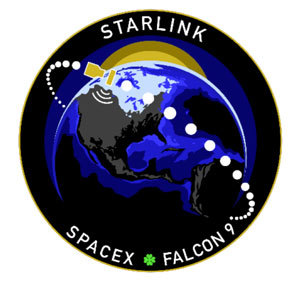
Falcon 9 rocket arrives on pad 39A for sunrise Starlink launch this weekend
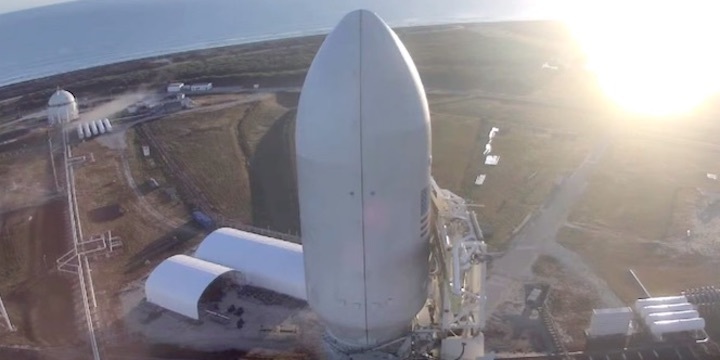
SpaceX plans to deploy the next group of Starlink internet relay spacecraft Sunday with a liftoff on top of a Falcon 9 rocket from NASA’s Kennedy Space Center, the company’s fourth satellite launch of the month.
The two-stage Falcon 9 launcher emerged from its hangar at the Florida spaceport Thursday and rolled up the ramp to pad 39A, where SpaceX will raise the 229-foot-tall (70-meter) rocket vertical for a test-firing as soon as Friday.
The hold-down firing of the rocket’s nine Merlin 1D main engines will last several seconds.
The test, which SpaceX calls a static fire, was part of every Falcon 9 launch campaign for nearly a decade. But SpaceX did not perform a static fire before its last four missions as teams try to cut the time required between Falcon 9 flights from SpaceX’s two launch pads on Florida’s Space Coast.
Assuming a good test-firing Friday, SpaceX is expected to press ahead with launch of the Falcon 9 rocket Sunday. There is an instantaneous launch opportunity at 7:02 a.m. EST (1202 GMT), about 10 minutes before sunrise Sunday.
The Falcon 9 will launch with the next batch of approximately 60 Starlink satellites, adding more capacity and coverage to SpaceX’s burgeoning broadband network.
Warning notices to pilots and mariners previously indicated the launch was scheduled Saturday morning, but sources said Thursday the flight was delayed to Sunday.
Forecasters from the U.S. Space Force’s 45th Weather Squadron predict an 80% chance of good weather Sunday. The primary weather concern Sunday will be with the possibility of violating the cumulus cloud rule.
A high pressure ridge is forecast to begin moving away from Central Florida this weekend, allowing a low pressure system and a cold front to move into the Mid-Atlantic states north of Florida.
“The spaceport will be within the warm, prefrontal regime during the launch window,” the weather team wrote Thursday. “Clouds will be thicker and more abundant than Saturday, but the vast majority will be too low-topped to create lightning launch commit criteria concerns. Southwesterly winds will increase to 15-20 miles per hour (up to 200 feet) in response to the tightening pressure gradient. The primary concern during the backup window will be the cumulus cloud rule.”

If the Starlink mission takes off Sunday, SpaceX will close out January with four Falcon 9 launches, keeping pace with the company’s goal of launching more than 40 Falcon flights in 2021.
A Falcon 9 rocket took off Jan. 7 from pad 40 at Cape Canaveral Space Force Station with the Turkish-owned Turksat 5A communications satellite. SpaceX launched 60 Starlink satellites Jan. 20 from pad 39A, then launched a rideshare mission Sunday on a Falcon 9 with a record-setting payload of 143 small satellites from U.S. and international customers.
SpaceX, founded and led by billionaire Elon Musk, will have more than 1,000 Starlink nodes in orbit with the roughly 60 more Starlink spacecraft set to launch Sunday. The company has launched 1,025 Starlink satellites to date, but some of the spacecraft were either prototypes or failed after launch, and are no longer in orbit, according to Jonathan McDowell, an astronomer at the Harvard-Smithsonian Center for Astrophysics who tracks global satellite and launch activity.
SpaceX says the Starlink network is providing preliminary low-latency internet service to users in the United States, Canada, and the United Kingdom through a beta testing program. Commercial service will begin after SpaceX has its initial network of around 1,584 satellites in orbit, including spares.
The quarter-ton Starlink satellites are built by SpaceX technicians and engineers in Redmond, Washington.
The initial block of Starlink satellites, including the 60 launching this weekend, fly in mid-inclination orbits tilted 53 degrees to the equator. They fly at an altitude of 341 miles, or 550 kilometers, to provide broadband coverage over nearly all of the populated world.
SpaceX plans to launch more Starlink satellites into polar orbit to enable global coverage for maritime and aviation customers, including the U.S. military. The company has regulatory approval to launch around 12,000 Starlink satellites.
Quelle: SN
----
Update: 30.01.2021
.
SpaceX targeting weekend for test fire and launch of Starlink satellites

Update (11:30 p.m. Jan. 29): SpaceX now appears to be targeting no earlier than Monday, Feb. 1, for this launch. A 10-minute window opens at 6:40 a.m. and weather is 60% "go" for the attempt.
SpaceX is set to test fire a Falcon 9 rocket at Kennedy Space Center this weekend after a previous attempt was scrubbed, potentially setting the stage for a launch as soon as early Sunday.
Teams at pad 39A had been fueling the 230-foot rocket for a brief test firing of its Merlin main engines at 10 a.m. Friday, but the attempt was scrubbed at the last second. Another six-hour test fire window will open at 12 p.m. Saturday.
If everything goes according to plan, Falcon 9 could launch with 60 Starlink internet satellites as soon as 7:02 a.m. Sunday, though typically the company has preferred a two-day gap between tests and launches. If so, the flight could push to 6:40 a.m. Monday.
SpaceX, which tests all its engines in Texas before transport to Florida, typically fires brand new rockets a second time once at the launch pad. Lately, the company has opted to skip pad tests for some missions depending on whether or not the booster has previously flown, the number of flights it's seen, and other technical factors.
Loaded into the payload fairing are 60 Starlink satellites set to boost the internet constellation's size to beyond 1,000 spacecraft in low-Earth orbit. It will mark the 18th full mission for the network, which is now serving beta customers in the northern U.S. and southern Canada.
In the event of a 7:02 a.m. launch Sunday, the Space Force said weather conditions should be 80% "go" for liftoff. A push to Monday would see the chances drop to 60% "go."
On either day, however, spectators will likely see a beautiful launch as twilight – set to begin around 6:30 a.m. – lingers just over the horizon. Falcon 9 will fly towards the northeast and drop off its first stage booster for an Atlantic Ocean drone ship recovery.
Launch Sunday, Jan. 31
- Rocket: SpaceX Falcon 9
- Mission: 18th batch of Starlink satellites
- Launch Time: 7:02 a.m.
- Launch Window: To 7:13 a.m.
- Launch Pad: 39A at Kennedy Space Center
- Trajectory: Northeast
- Landing: Drone ship
- Weather: 80% "go"
Quelle: Florida Today
----
Update: 31.01.2021
.
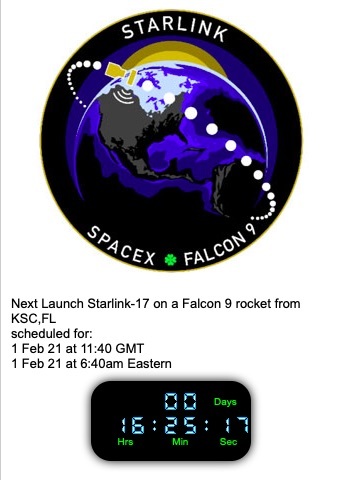
Quelle: AS
----
Update: 1.02.2021
.
Due to rough weather in the recovery area, now targeting no earlier than Wednesday, February 3 at 5:57 a.m. EST for launch of Starlink
Quelle: SpaceX
----
Update: 4.02.2021
.
Start von SpaceX’s 17th Starlink

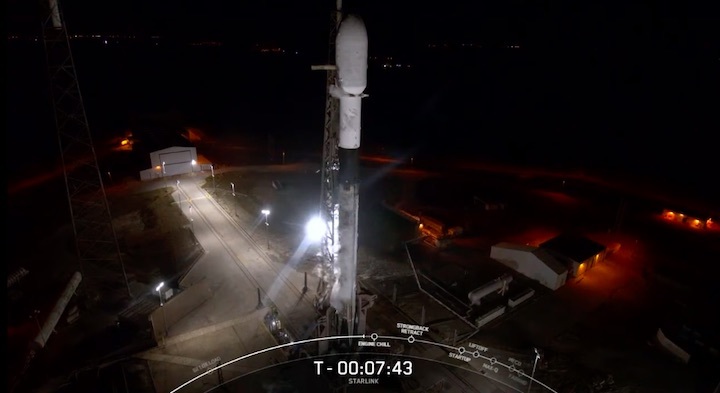
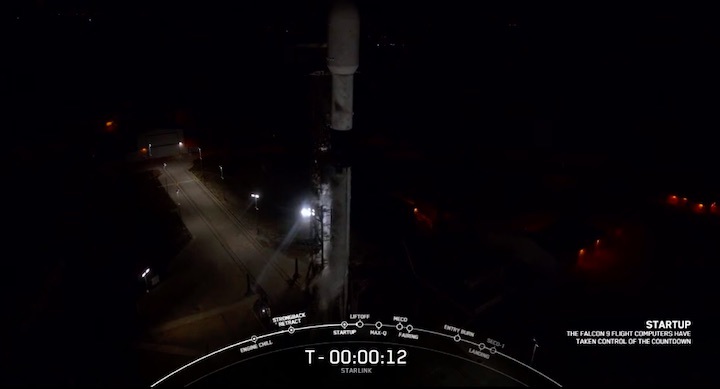
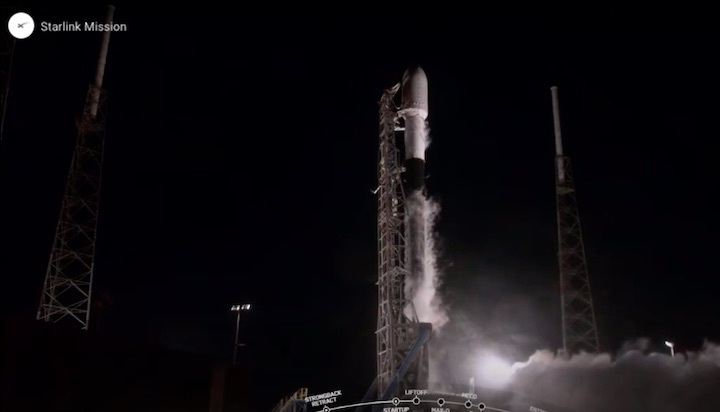
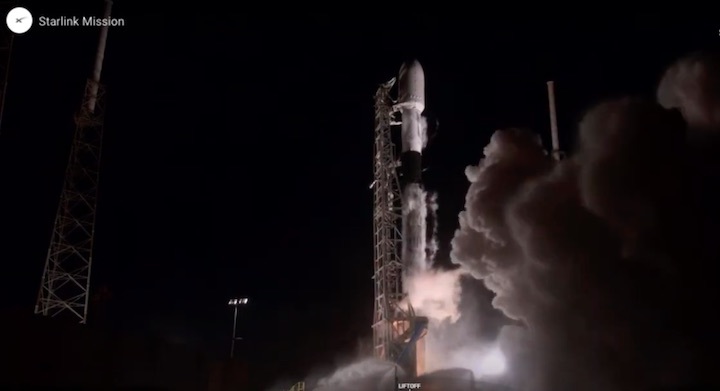
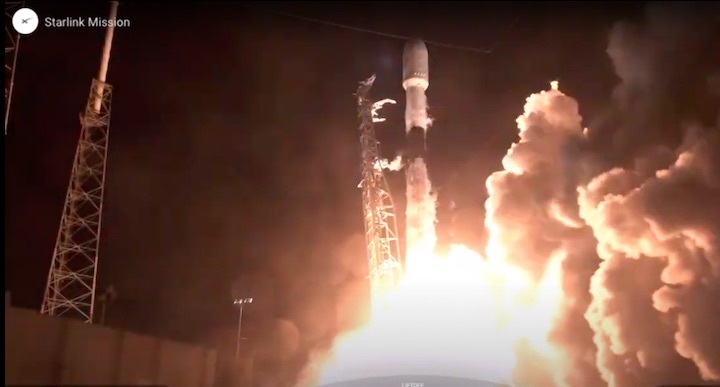
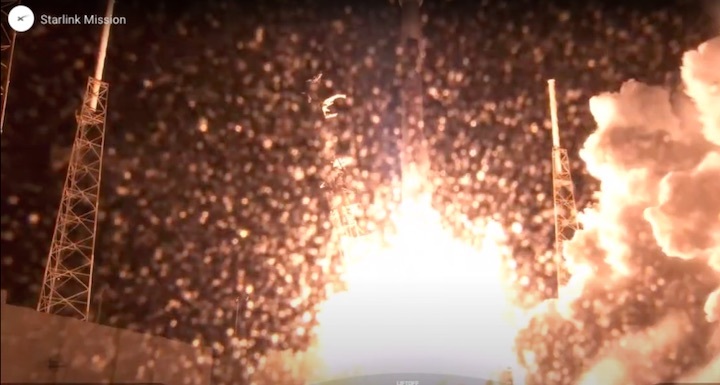
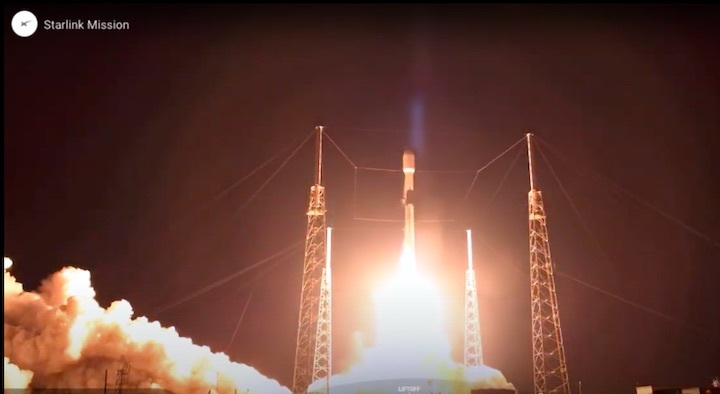
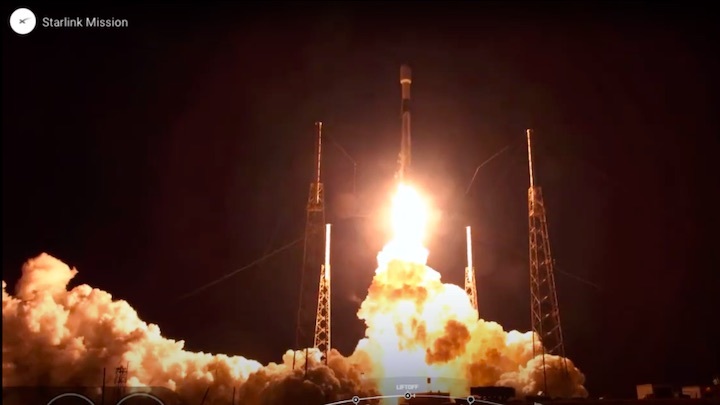
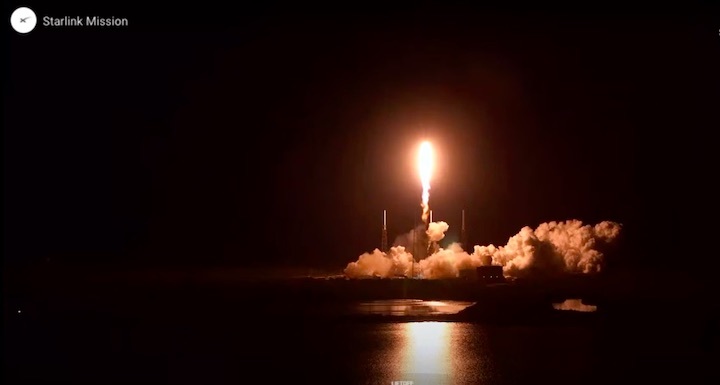
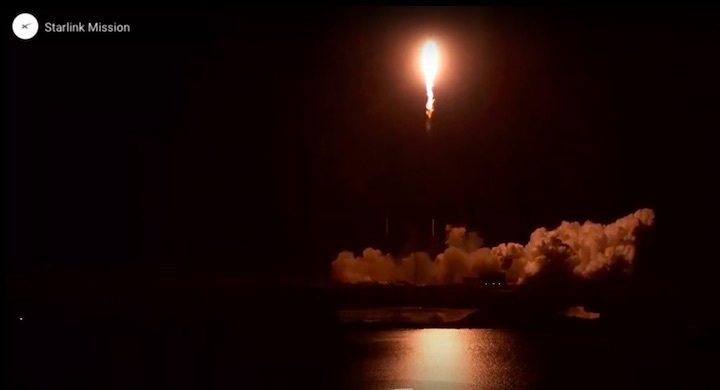
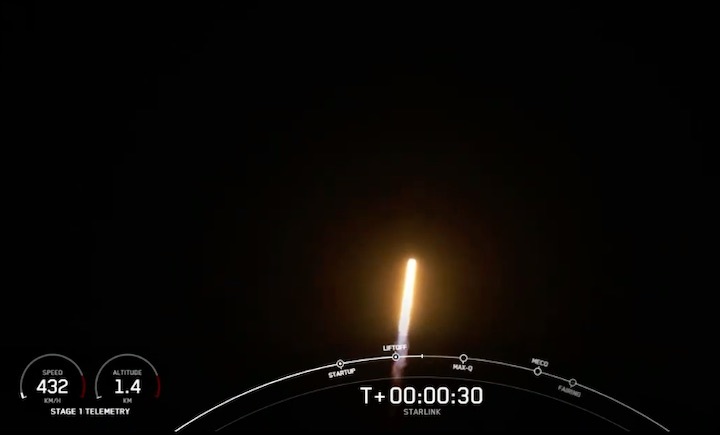
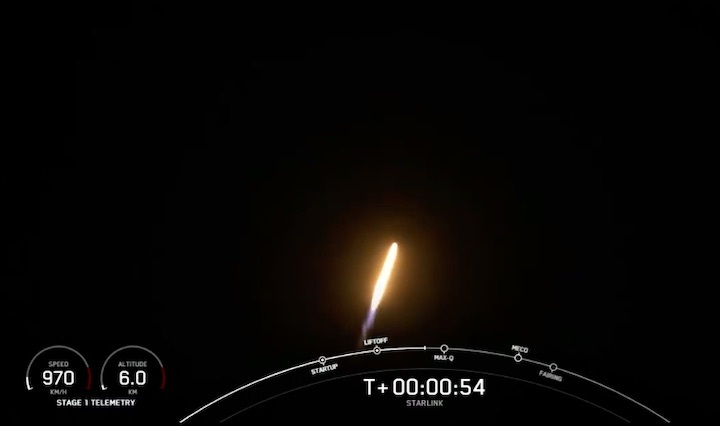
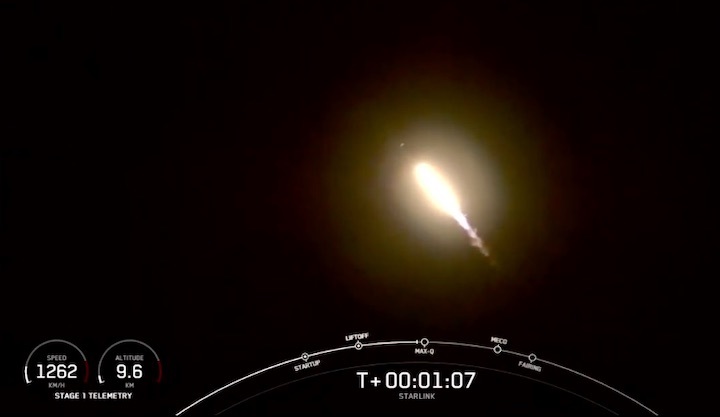

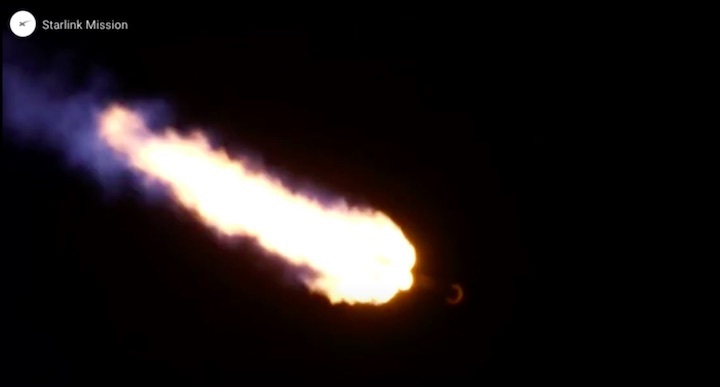
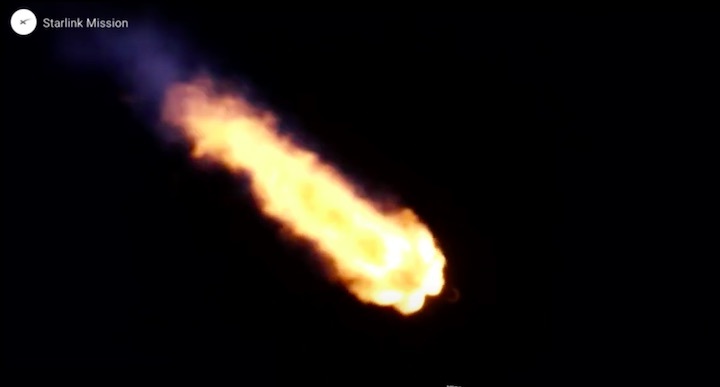
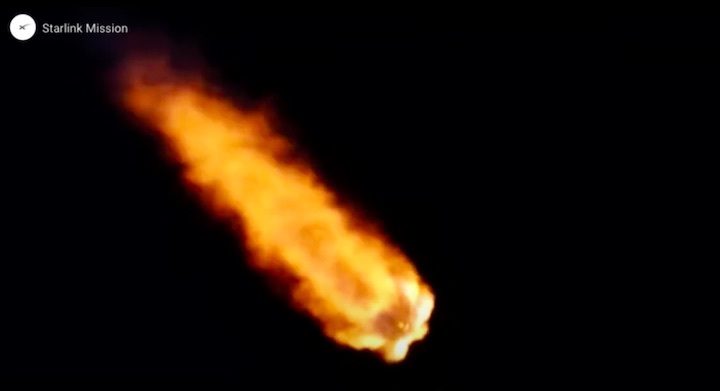

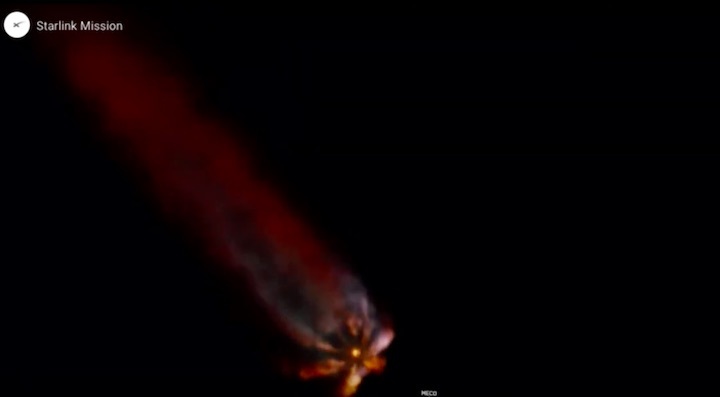
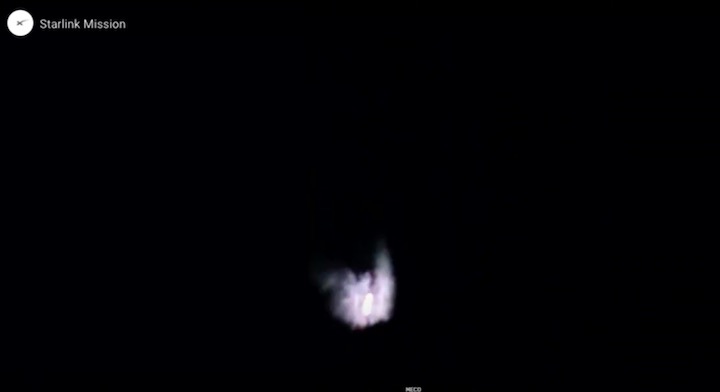
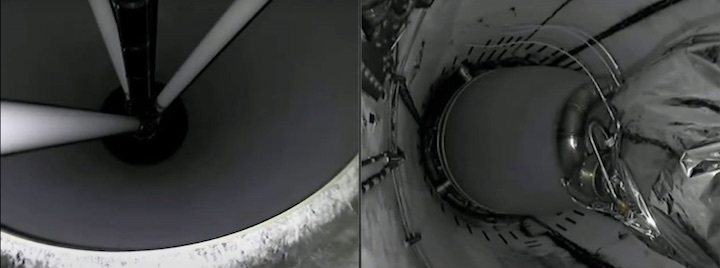
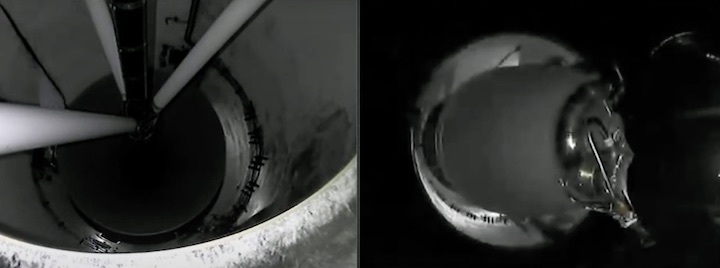
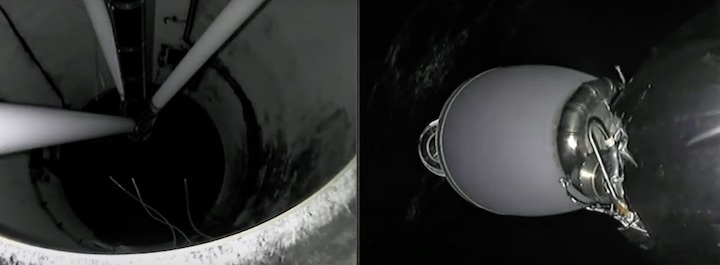
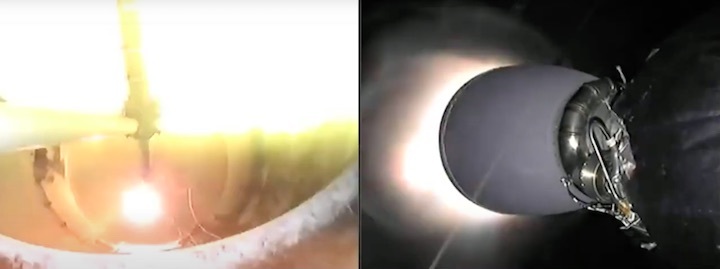

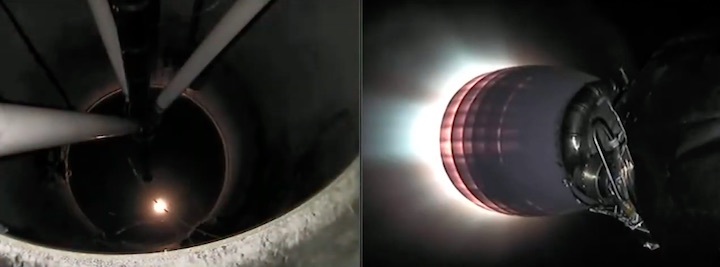

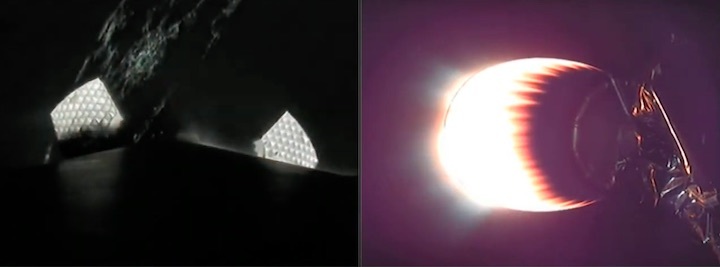
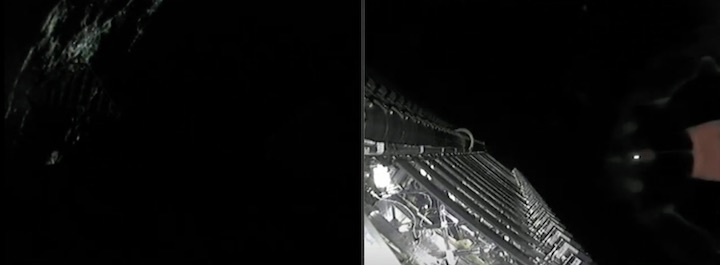
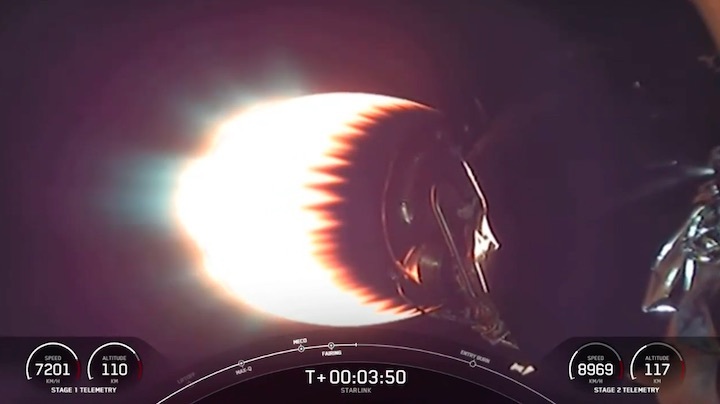
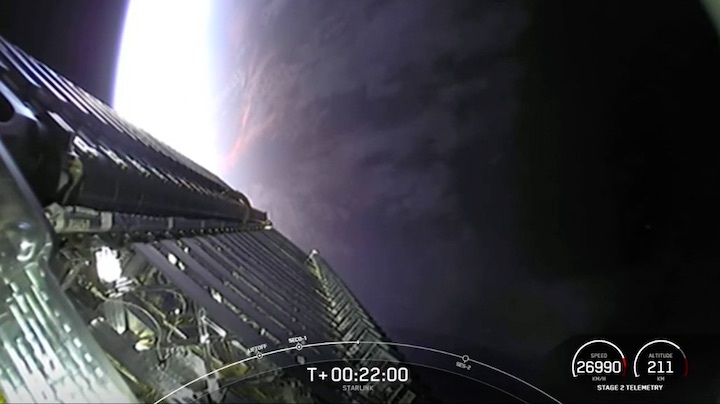
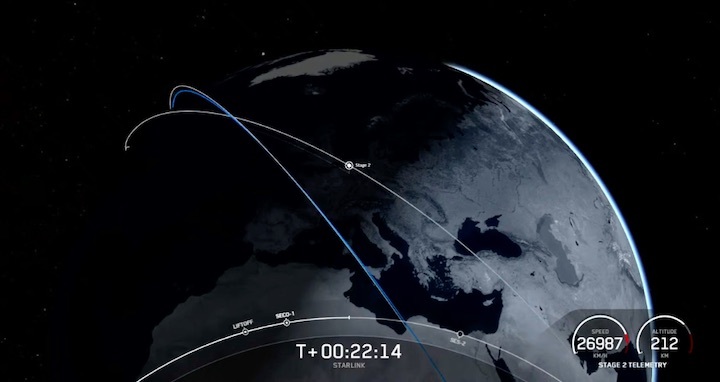
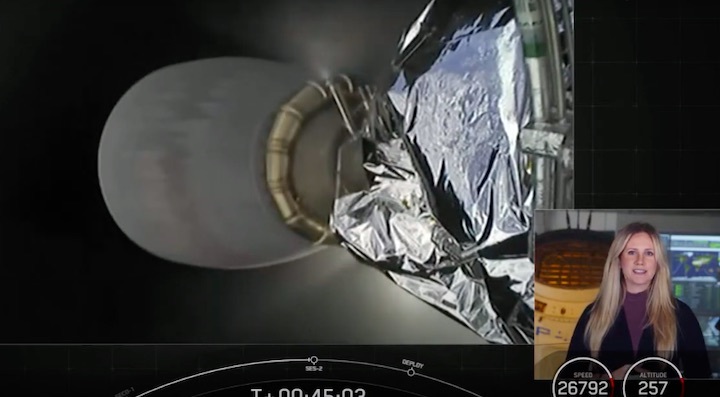
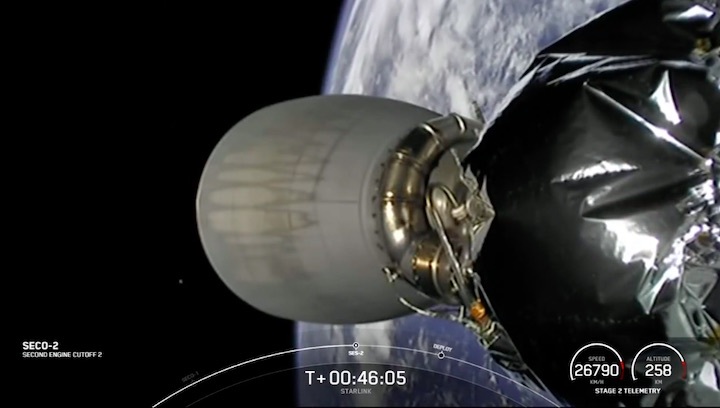
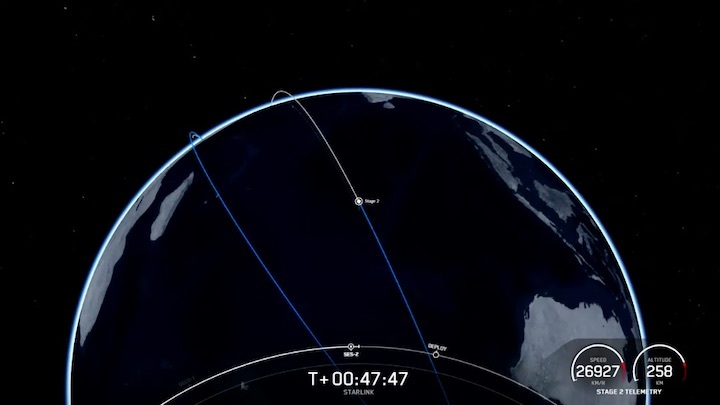
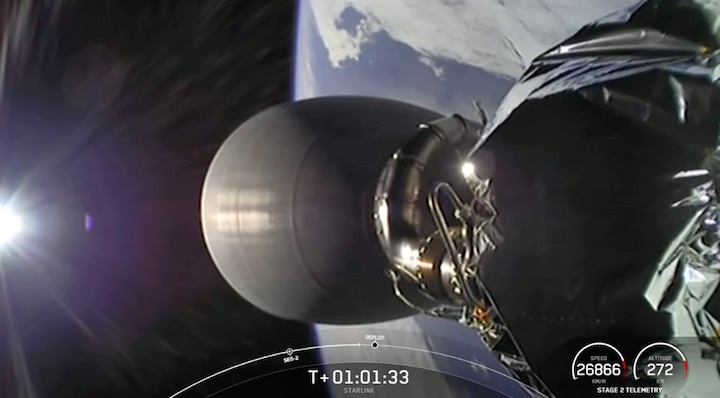
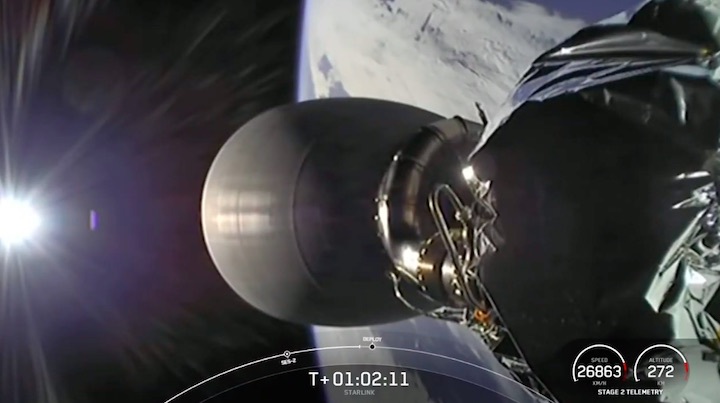
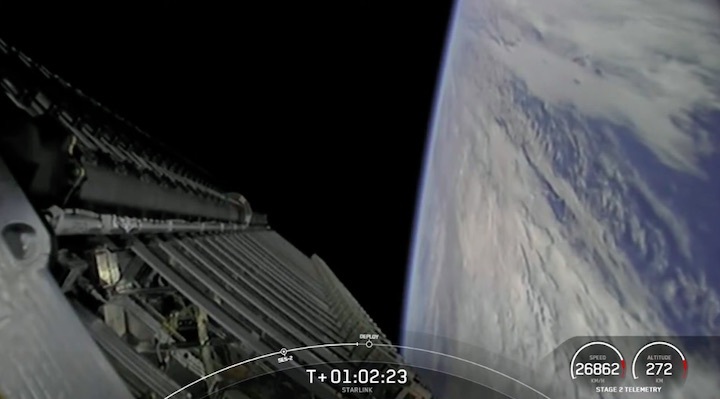
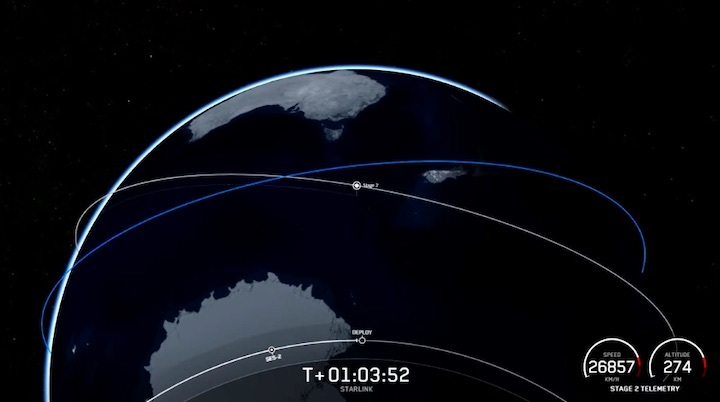
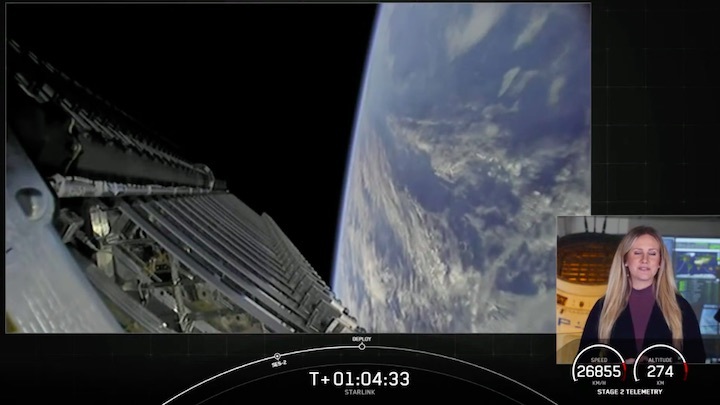
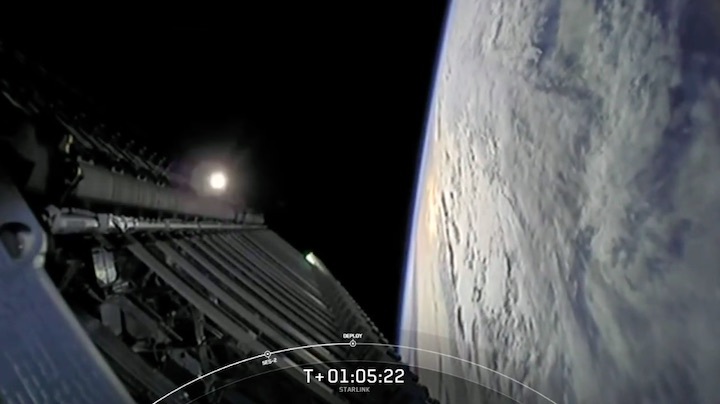
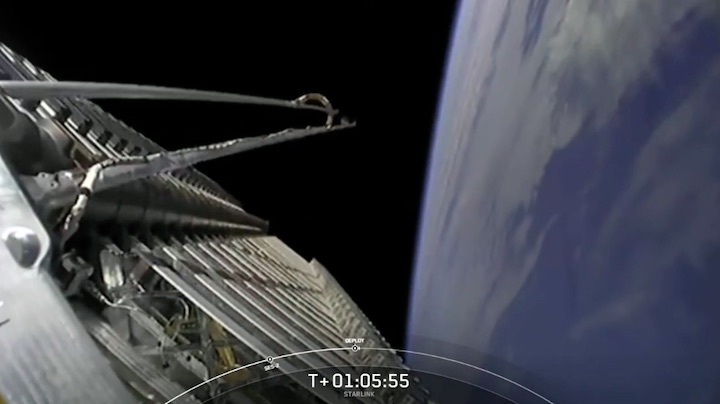
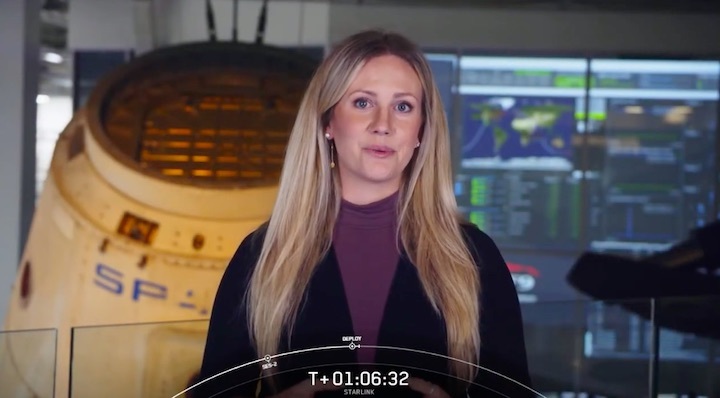
Quelle: SpaceX
